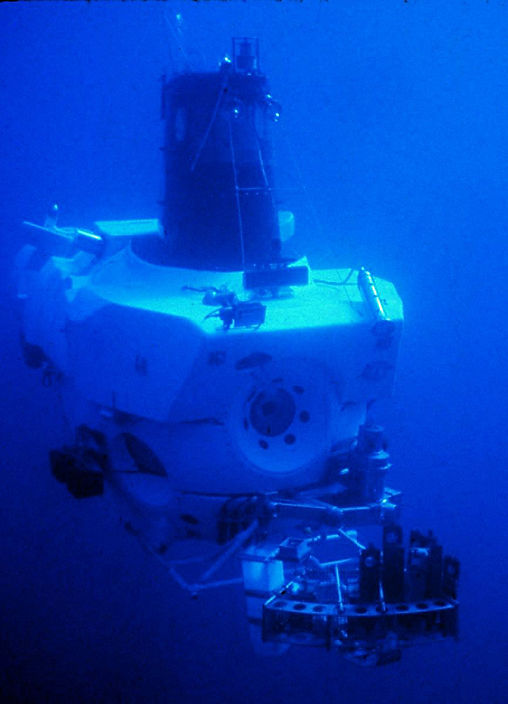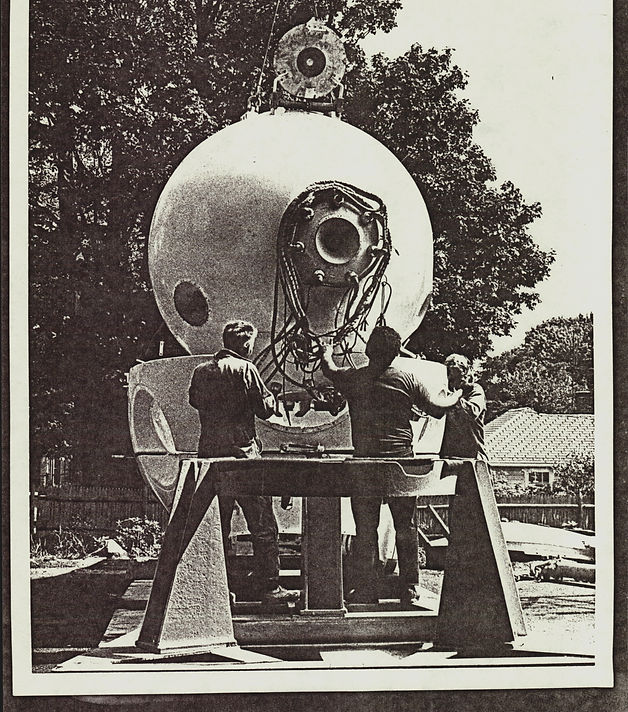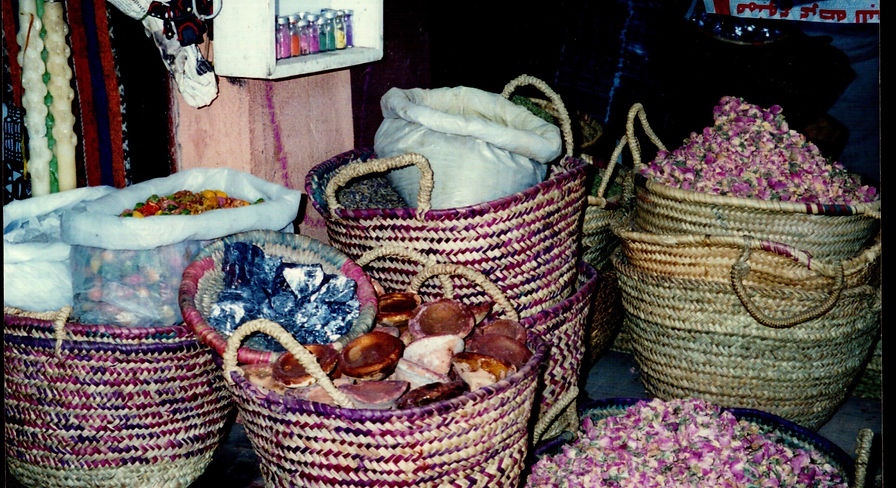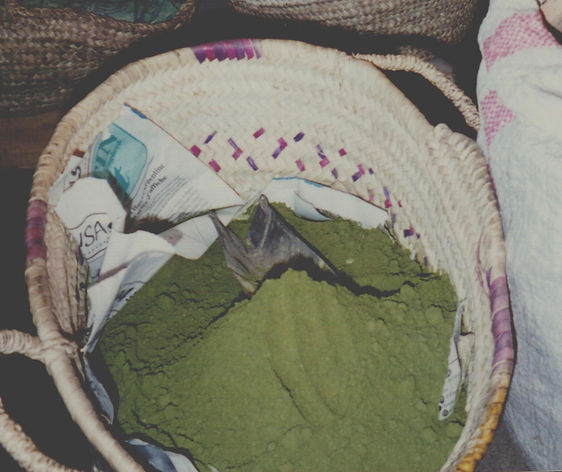Victoria A. Kaharl
BOOKS
Water Baby,
the Story of Alvin
Water Baby is a 25-year history of the extraordinary research submersible Alvin, the world's first deep-diving submarine. It tells Alvin's incredible story, a story of great vision and danger, of human folly as well as courage, of profound and shocking discoveries in our planet's last great frontier.
The National Science Foundation bestowed on Alvin a distinguished public service award to commemorate 25 years of "unique" service. Water Baby is the gripping story of how this one-of-a-kind sub earned that award, along with its dedicated crew, as well as the scientists who used it and, in the early years, fought to keep it operating.
Published by Oxford University Press.
book reviews
Water Baby, the Story of Alvin

Nature
"Victoria A. Kaharl has produced a gripping account not only of Alvin's birth, life and work, but also of the underside: the perpetual hustling for funds, the arguments between can-do and here-are-ten-reasons-why-you-can’t bureaucrats, the sheer human nastiness that arises when scientific egos compete for priority, the continual need to keep undercapitalized technology going with sealing wax, and the sexual harassment of female oceanographers at sea.
The best compliment I can pay Kaharl is to report that one night while reading the book, I forgot time and coffee, and suddenly found it was 5 AM."
-- Peter J. Smith, The Open University,
Milton Keynes, UK
Kirkus Reviews
"Kaharl’s account describes the findings and their implications for geological and biological history in detail, but she is marvelously human as well. There is the distinctly motley crew of the distinctly bizarre first mother ship… The old hostilities and unfortunately shocking behavior toward women are also brought to light… Kaharl has some revelations about scientific behavior as well.
This is no public relations job. Indeed, the book was written on a research grant and displays a scrupulous attention to detail and veracity. The science, the adventure, the personalities all make for absorbing reading."
New York Times Book Review
"This is a fascinating history… Ms. Kaharl’s enthusiasm proves to be irresistible."
- Tom Yulsman
Oceanus
"A 25-year history of a research submarine could easily make for a history that only a scientist could like. But in Kaharl’s hands, Alvin’s biography is a gripping saga of first encounters in the deep ocean. … a story I could not put down once I started to read it.
This book speaks with authority and without jargon about deep submergence technology and ocean science. It is not only a history of a submarine, but also a history of deep-sea oceanography. And it’s a story of a small band of people, the scientists and crew who have been associated with Alvin and its two motherships, especially Lulu, which ‘looked like a piece of the dock that had been ripped off,’ Kaharl writes.
Water Baby is an excellent piece of journalism from a journalist with a gift for making science come alive. … Kaharl has managed to capture the essence of being there and being with an extraordinary collection of characters. I particularly liked the parts of the story told about the critical role of Crew Chief George “Brody” Broderson on Lulu. He was ‘the resident papa-san
and patriarch,’ she writes.
‘He had no patience for a seaman who couldn’t splice line or a scientist who put
grimy hands on his clean white submarine.
There was Chicken Man, the Weasel, Bubble Butt, and Saniflush … Charlie Tuna,
El Kabong and Captain Crunch were skippers. … Baby Duck was pigeon-toed.
He was also six foot four, had a schooner etched in a front tooth, an anchor tattooed
on one cheek, a pony tail and a long beard that separated into two strands.’
I strongly recommend this book to all readers."
- Frederick Grassle, Director, Institute of Marine and Coastal Sciences,
Rutgers University

New Scientist
"Kaharl tells the story of Alvin, its science and its people, in Water Baby, and the story is a fascinating one. … the excitement, the wonder of science, comes through most clearly…
At sea each morning just after breakfast, a pilot and two observers slip in through the hatch and the sub is lowered into the sea. Each afternoon at tea time, Alvin bobs to the surface and is hoisted back on board. It seems such an ordinary procedure, and yet, in between, the three on board have visited the edge of human knowledge… and the seeming ordinariness is only possible through the dedication of pilots and technicians to the highest standards.
Is there a British project that generates the same sense of excitement in those that come into contact with it, the same commitment against all odds? Perhaps our British phlegm forbids such ventures. But maybe someone reading this book will be inspired to follow and to create something as important and enduring…"
- Joe Cann, University of Leeds
Scientific American
"Kaharl… has pored over the logs and the reports and the piles of recorded tapes, talked to and worked alongside the sub’s devoted people of every disposition and talent, dived herself, a little frightened, and come up with an intimate chronicle… The exploits of Alvin are both well sung and well explained."
Boston Globe
"The history of Alvin, the first deep-diving submarine, receives a first-rate treatment here. The author’s descriptions of the weirdness of life that the dark caverns of the ocean bear is informed, exotic and sometimes, frightening, as well it might be. She’s also good at chronicling some of the political infighting that plagued the submarine, which has its own weirdness."
- Ray Murphy
Sea Technology
"Victoria Kaharl’s mesmerizing account of the adventures and misadventures of Alvin reads much more like a novel than a dry technical history. It is the kind of book one finds difficult to put down. … Water Baby is a fascinating warts-and-all picture of how underwater science and exploration is actually done. This is must reading for anyone who works in or even thinks about the sea."


American Scientist
"This story of the life of a deep-diving, three-person research submarine is a wonderful book; it bubbles with enthusiasm for Alvin. Victoria Kaharl is a talented writer who has done an immense amount of research in order to understand the scientific, engineering, political and personal history of this little vessel."
- William P. Dillon, U.S. Geological Survey
Sea Frontiers
"Water Baby is much more than scientific historiography. This book documents the 25-year development and ongoing adventure of a vessel as critical to understanding the ocean today as HMS Challenger was some 120 years ago. Kaharl gives us the ebb and flow of politics, industry, and science; the bureaucrats and businessmen, scientists and sailors who fought for and against Alvin’s birth and continued existence. …
Kaharl described both science and scientists clearly and wholly unretouched. There are the tingling moments of wonderment and great discovery… the clash of massive egos… and the difficulties faced by women oceanographers cracking a male-dominated environment. Water Baby comes as close to the current edge of deep sea science as book publishing will allow."
- Charles Messing

The author, Victoria Kaharl, center, with members of the Alvin crew aboard the mothership, R/V Atlantis II, in the North Atlantic.
excerpts
Frankincense and Fire
In Search of the Healers in Arabia
photographs

Gum resins like frankincense, above, still play a major role in Arabia’s folk pharmacopoeia. They may be boiled, taken with coffee, chewed, incorporated into poultices or gargles; inhaled in powdered form through the nose; burned like incense and sniffed; or a patient may straddle the smoke.
Bedouin family in tent, Eastern Province of Saudi Arabia.


Dried roses, far right, fill baskets and bins in folk pharmacist shops from Bahrain to the western-most Arab land of Morocco. To Western cultures, a rose is a rose is a rose, as the poet said. To the ancients, a rose was not just beautiful and sweet smelling, it was a drug. And a rose unlike any other rose was very special for its promise, even if unknown. Rose petals are used today as an ingredient in herbal medicines, commonly for indigestion, and also to make a non-medicinal rose-flavored drink.

Henna (Lawsonia inermis) happens to be antibacterial. But it is not the medicine it once was. It is used today in Arabia as a cosmetic. The henna bush has tiny white flowers but these are not used for the dye. The green leaves are pulverized to a fine powder that is mixed with a little water to make a paste. This glop, now the color and consistency of dark mud, immediately turns anything it touches red-orange.